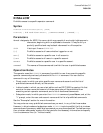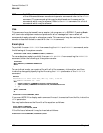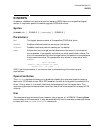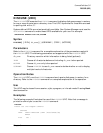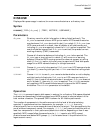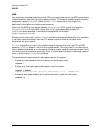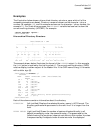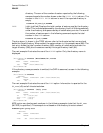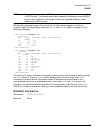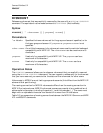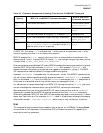
Chapter 3 193
Command Definitions C-E
DISKUSE
DISKUSE
Displays disk space usage, in sectors, for one or more directories or a directory tree.
Syntax
DISKUSE[ [ DIR=] dir_name] [ ; TREE | NOTREE | USENAME ]
Parameters
dir_name Directory name for which information is being listed (optional). The
dir_name is assumed to be an MPE syntax name. HFS-named directories
may be shown if dir_name starts with a dot (.) or a slash (/). If dir_name is an
HFS name and ends in a slash, then all objects at all levels under and
including dir_name are reported, unless the NOTREE option is specified. The
use of wildcards is permitted. If dir_name is omitted, the process' current
working directory (CWD) is assumed.
TREE Causes all directories below and including dir_name to be reported. The
dir_name may or may not end in a slash (/), with no error or warning
detected. Since the MPE naming convention does not support a trailing
slash (/), the TREE option is the only way to report multi-level disk space
usage for an MPE-named directory in a single command.
NOTREE Causes dir_name only to be reported. If dir_name is an HFS name and ends
in a slash (/), a warning tells you that NOTREE overrides the trailing slash
(/).
USENAME Causes DISKUSE to use dir_name name to decide whether or not to display
multiple levels of directories. If dir_name is an HFS name and ends in a
slash (/), then it and all directories under it are shown. If dir_name does not
end in a slash (/), then only dir_name is reported. The USENAME parameter
only applies to HFS-named directories and is ignored for MPE-named
directories. The USENAME parameter is the default.
Operation
The DISKUSE command reports disk space, in sectors, for a directory. Disk space allocated
to directories themselves (including accounts and MPE groups) is counted as part of the
total number of sectors. The process' CWD is shown for all relative pathnames.
The number of components in the pathname controls the level of directories being
reported. If a pathname has four components, for example, /a/b/c/d, then only
directories with four or more components contribute to the output. This also applies to the
use of wildcard component names. For example, /@/@/@/@ only counts directories with at
least four components in their pathname (absolute or relative, depending on how it was
specified). MPE names follow the same formula: @.@.@ reports only MPE-named
directories one level below MPE groups. (@.@ is the same since it is qualified with the
logon account name.)



